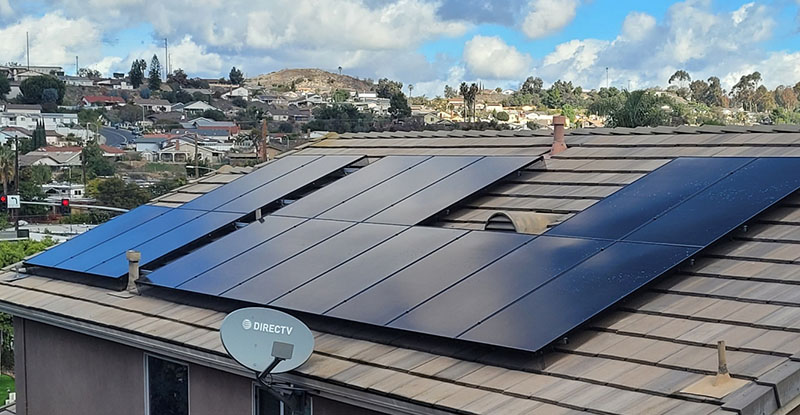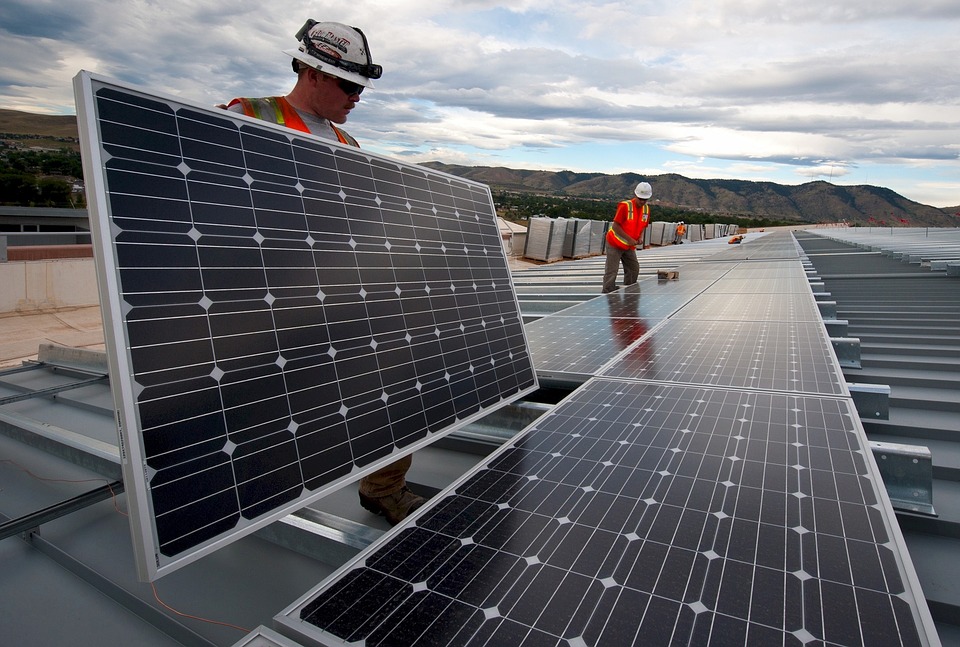
One of the first questions you’ll be asked in the process of going solar is, “What is your roof made of?”
Solar can be installed on just about any roof type. However, there are certain materials on which solar panels can’t — or shouldn’t — be installed. So that begs the question, what’s the best roof material for solar panels?
In this article, we’ll review five different materials to see which one makes the best roof for solar panels.
Best roof materials for solar
Composite shingles
This is the most common, and perhaps best, roof material on which to install solar panels. Because composite shingles are so common, this roof type offers the widest range of options for equipment and installers. This reduces the need for specialized solar equipment and labor, and reduce your overall project costs.
Pictured on the far left in the feature image above, composite shingles — aka asphalt shingles — are made from a fiberglass or cellulose mat. Asphalt and other minerals are then added to the shingle to produce the final product.
Composite shingles are often the most affordable roofing type and come in many colors. Most come with a standard 30-year warranty, although they should only be expected to last 15-25, depending on conditions and care.
If your composite roof is older than 15 years or starting to show major signs of wear, solar installers will likely recommend re-shingling before installing solar panels. Even so, composite shingles are often considered the best material on which to install solar panels.
Related Reading: How To Choose Solar Panels for Your Home
Tile
Tile roofing is another very common roof type in the Western US that can be found in almost any neighborhood. Tiles, themselves, can be made of different materials, and that is why it is important to accurately determine what materials your tiles are made out of before proceeding.
Roof tile materials include:
- Clay
- Ceramic
- Metal
- Synthetic cedar
- Slate
- Concrete
The material type can impact the cost of your solar project. For example, installing solar panels on clay tiles may be more expensive than installing on concrete tiles.
When a solar panel array is installed on a tile roof, they will need to be attached to brackets that will lift the panels above the roof. The distance that the panels must be raised will be dependent on the material itself, and the cost is also affected based on what material the tiles are.
Most installers, especially in warmer climates, are familiar with and comfortable working on tile roofs. However, it may be harder to find an installer to work on a tile roof in the northern parts of the US where they are less common.
Here’s how a solar system looks on a tile roof:

Metal Standing Seam
Metal roofing with standing seams is one of the best roof material for the installation of solar panels. The standing seams on these roofs make the attachment of the panel array incredibly easy, and with easier installation comes a cheaper cost.
You also do not have to drill any holes into your roof with this roof type. Some of the other benefits of metal roofing are that, by itself, it is already more eco-friendly. They are often made out of recycled materials and are durable enough to last for over 30 years.
Metal roofs with standing seams can allow you to install both thin film and standard PV panels. These roof types also reflect a significant amount of sunlight where it is not being absorbed by the solar panel, which leads to a cooling effect that can increase the efficiency of your system.

Tar and Gravel
For homes that have a flat roof, it is very likely that they will be of the tar and gravel roof type (second from the right in the feature image). Tar and gravel roofs are made out of layers of sheets that are attached with hot tar and roofing felt. There are some other mineral coatings added, as well. Because these are flat rooftops, they may require additional brackets that can be tilted at the 30-degree angle.
This is very simple to do, but it will be more expensive than installing on a tilted roof or with a different material. Nevertheless, tar and gravel is still a very viable roof material for the installation of solar panels.
Wood
The last roof type that you will see commonly throughout neighborhoods are wooden roofs. Wooden roof types can include shingles at an angle or may be completely flat, so the specifics will be dependent on the way the roof is structured.
In any case, a wooden roof is not viable for solar panels because of fire safety concerns. Therefore, wood is not the best material for solar panels.
The best materials for solar panels
Rooftop solar equipment and installers have come a long way in recent years and most roof materials are suitable for solar panels.
With that said, the best roof material is anything that will keep your solar panels secure for their 25-warrantied life or longer. While there may be minor advantages for one material over another, don’t let perfect be the enemy of good. The important thing is to get a system installed so you can start saving money and generating clean energy.
All Things Roof FAQ’s
What is an ideal roof for solar panels?
In most cases a composite asphalt shingle roof, facing south with enough space for placement of your entire system would be the best. Although, in most parts of the country as long as you have space on your roof and you get ample sunlight, solar is viable on most roof types except wood shake.
What is the best roof design for solar?
The answer is pretty straightforward, a large square roof is ideal for a simple solar system install. Roofs with lots of tiers, chimneys, skylights, pipes, and very little extended spaces, create lots of challenges for system design and installation.
What type of roof is not good for solar panels?
We hate to be the bearer of bad news, but if you have a wood roof your options are limited. These roofs will disqualify you from installers, although you still have the option to reroof or look into ground mount solar installations.
What if my roof is old?
If your roof is too old or worn down, it’s best to replace it before installing solar panels. Some installers offer both services, which can bring down the cost by combining the projects.
If your roof is older, but not at the stage of replacement, you can still install the system. However, you’ll likely end up paying for the labor to un-install and re-install the system when you do end up replacing the roof. This cost isn’t typically welcome when you’re already paying for a new roof.



